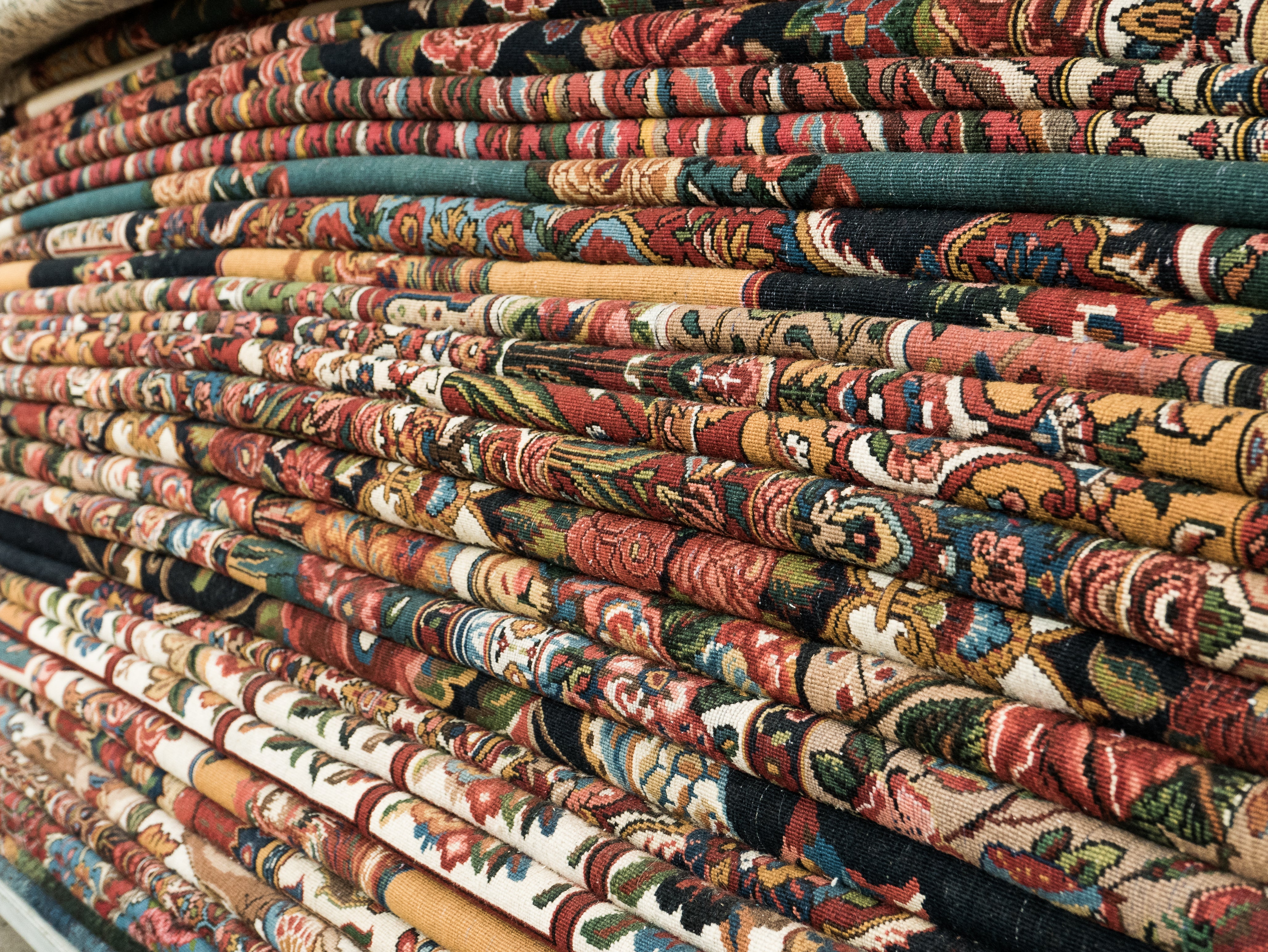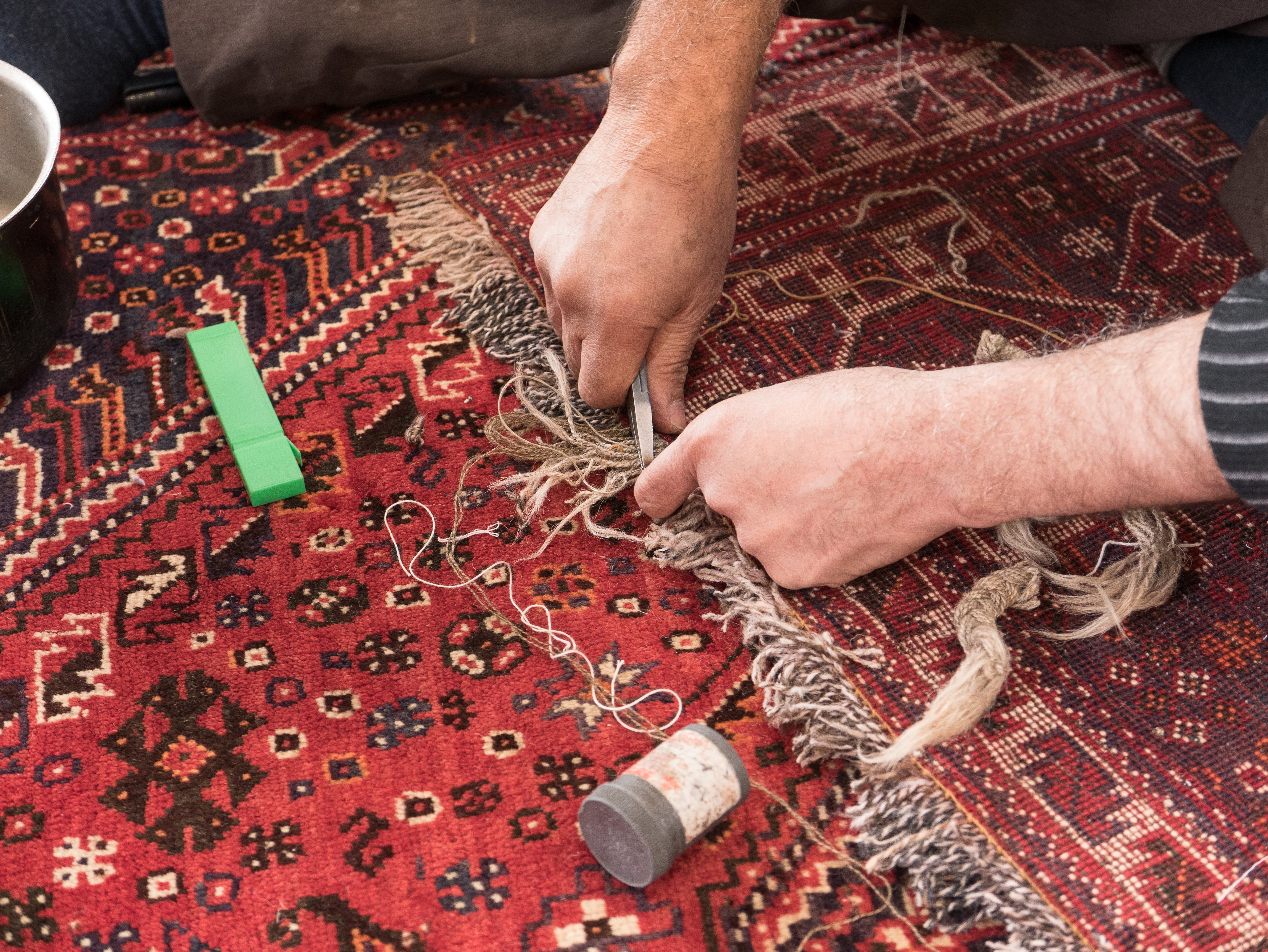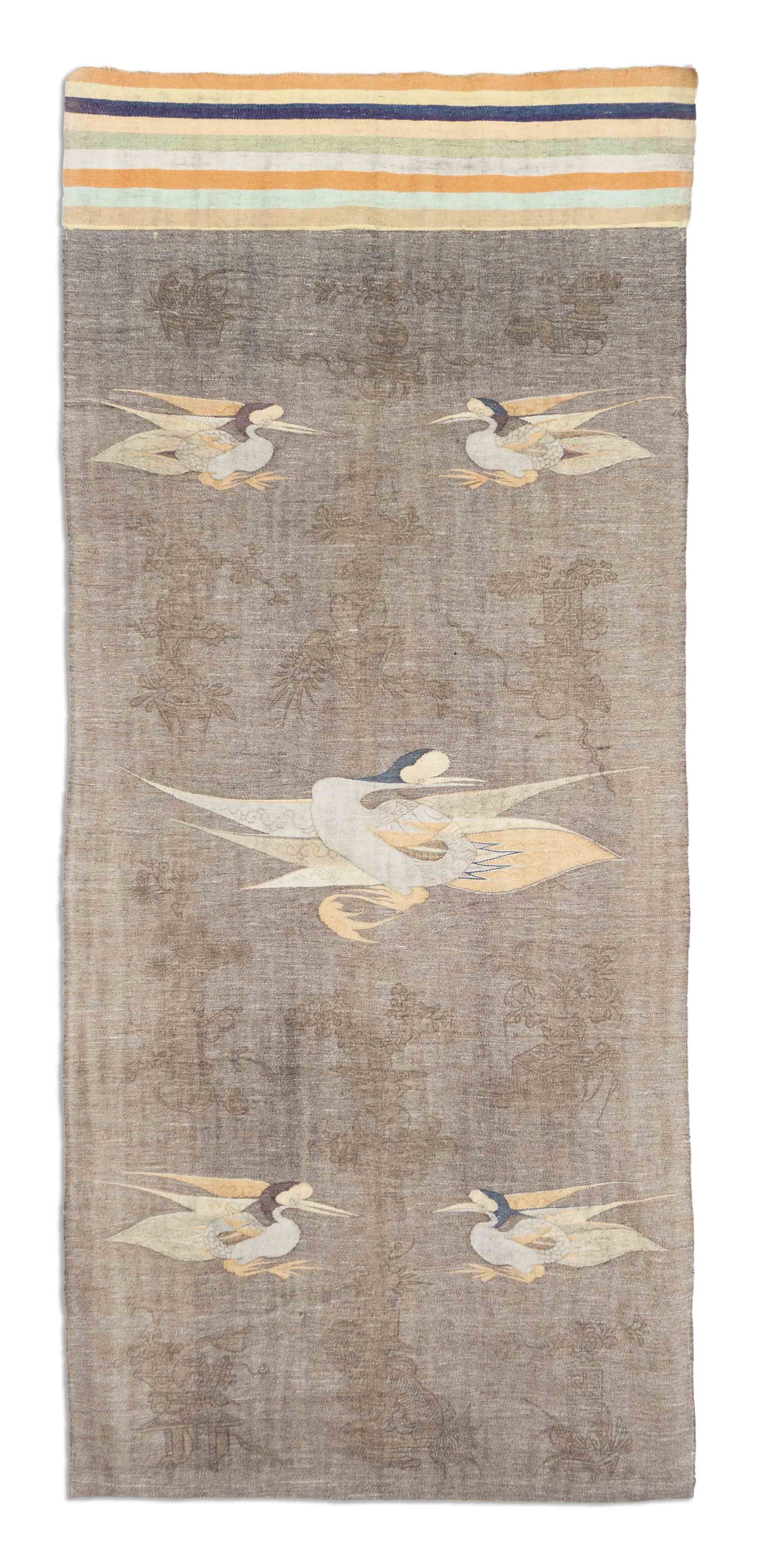
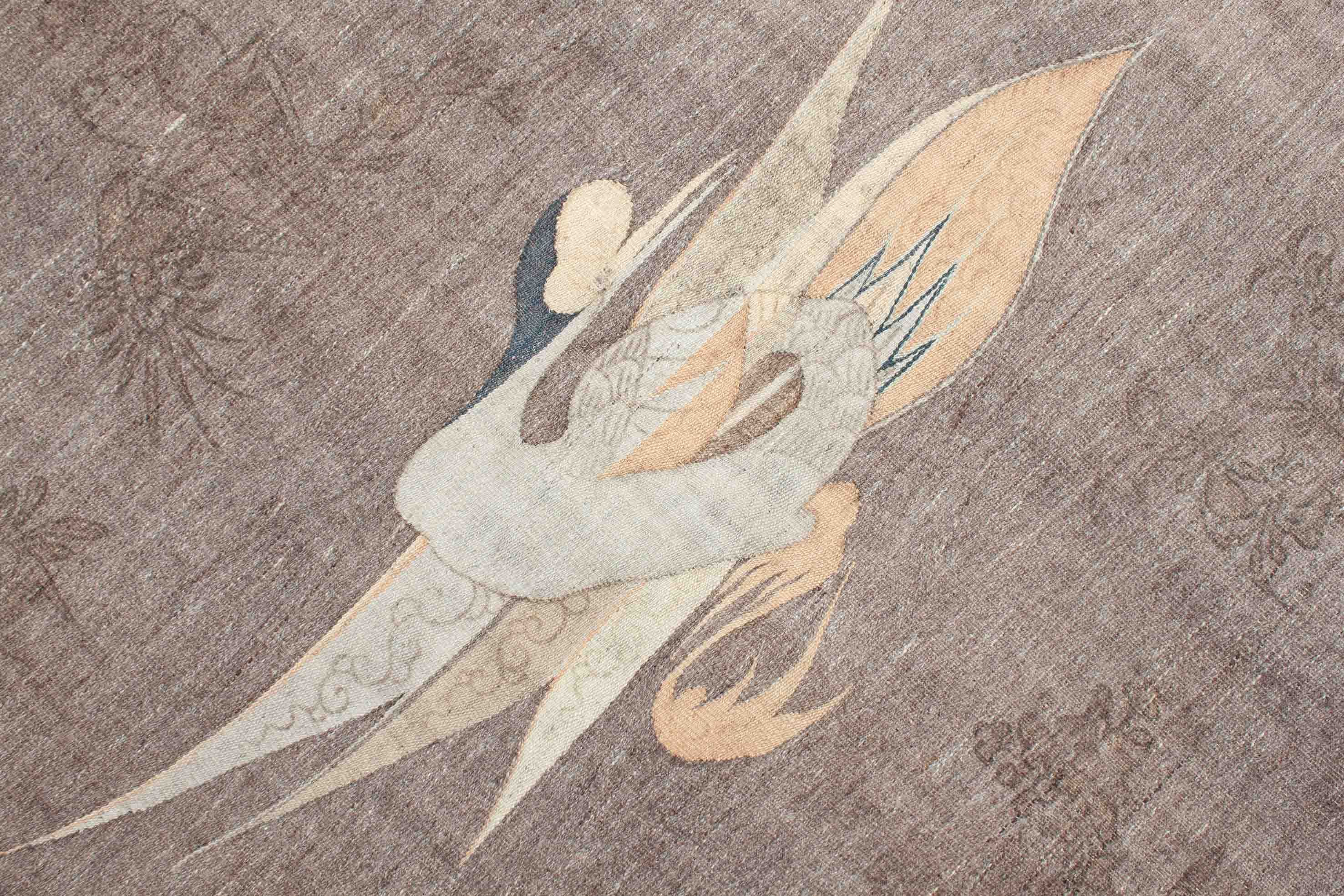
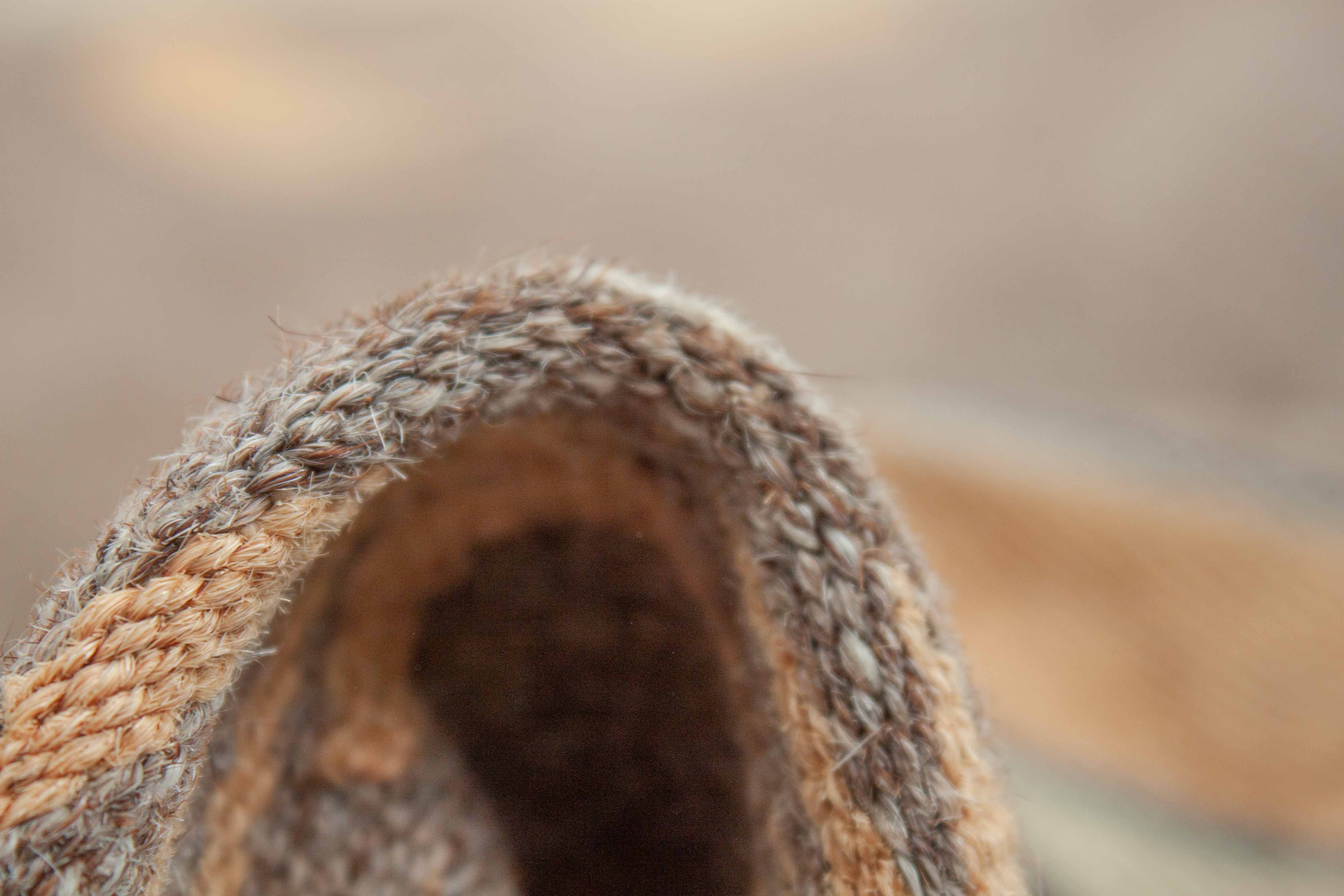
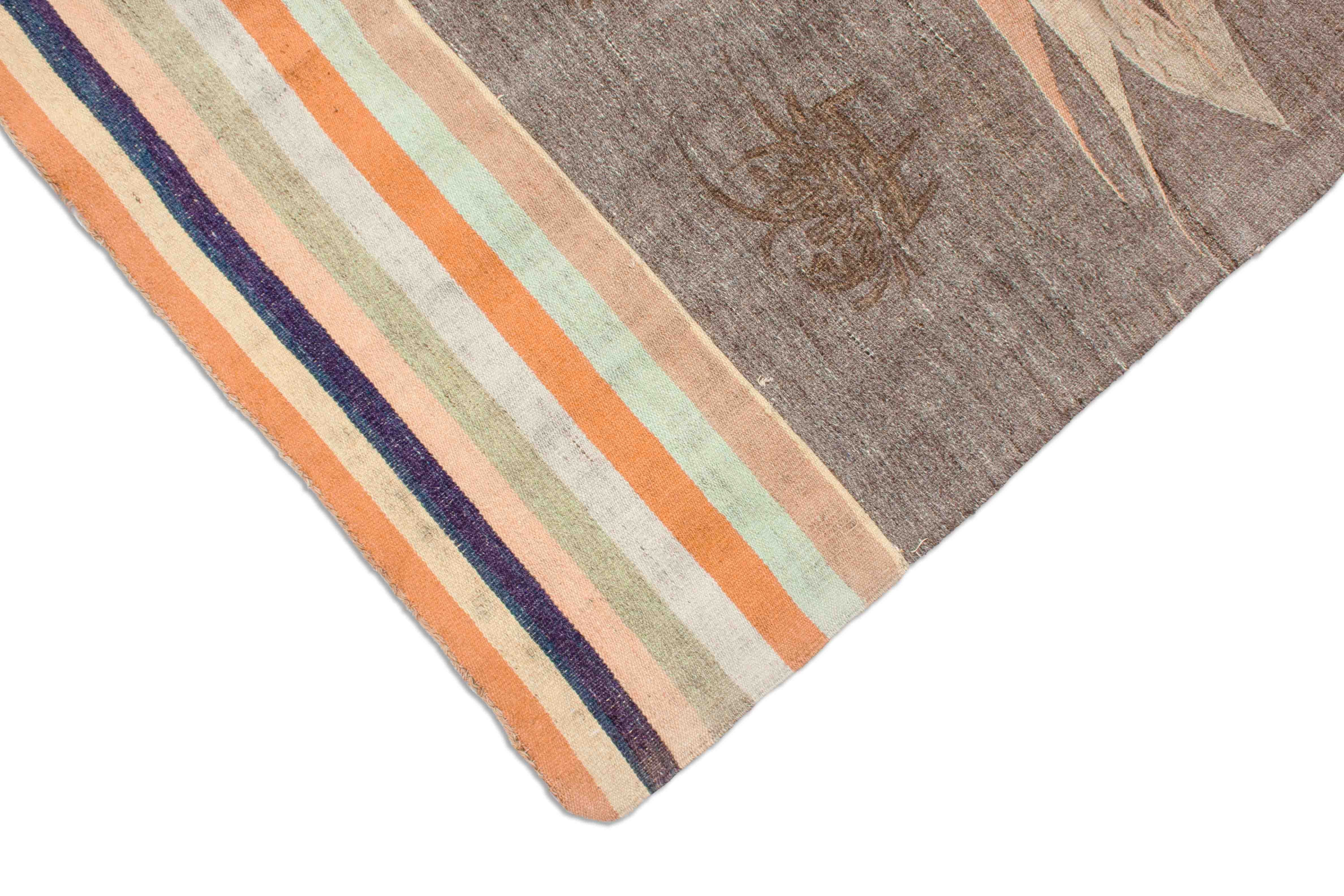
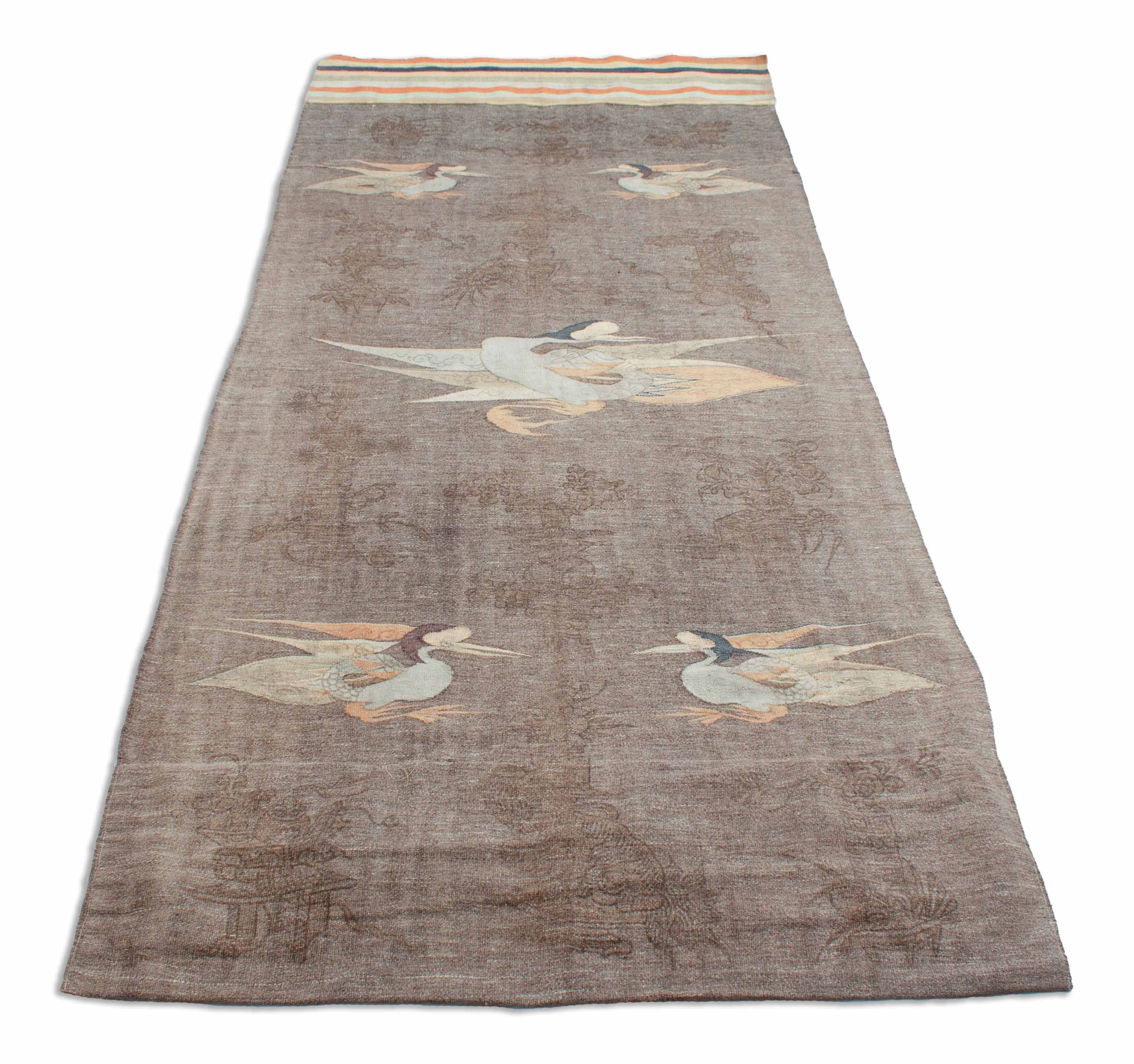
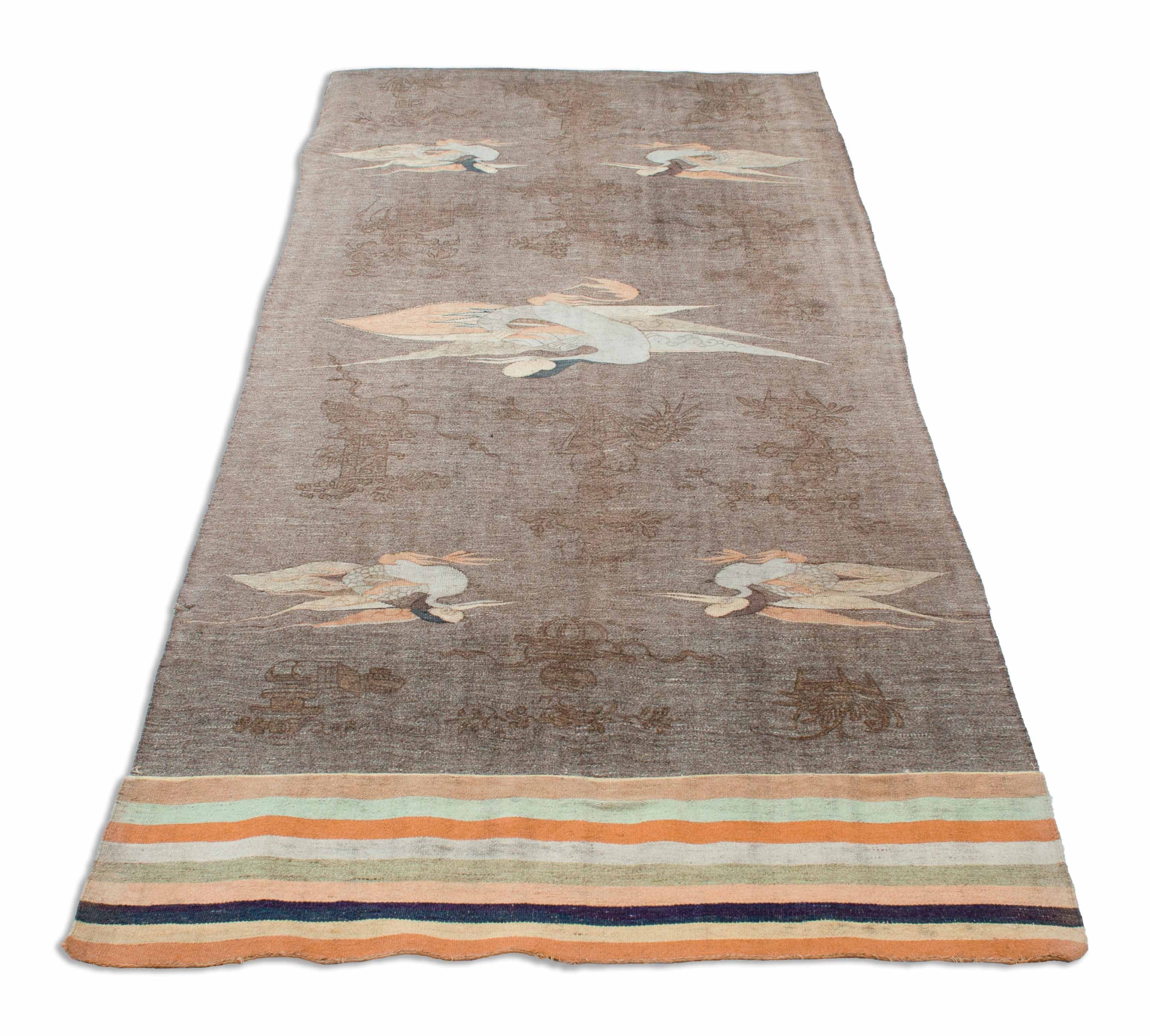
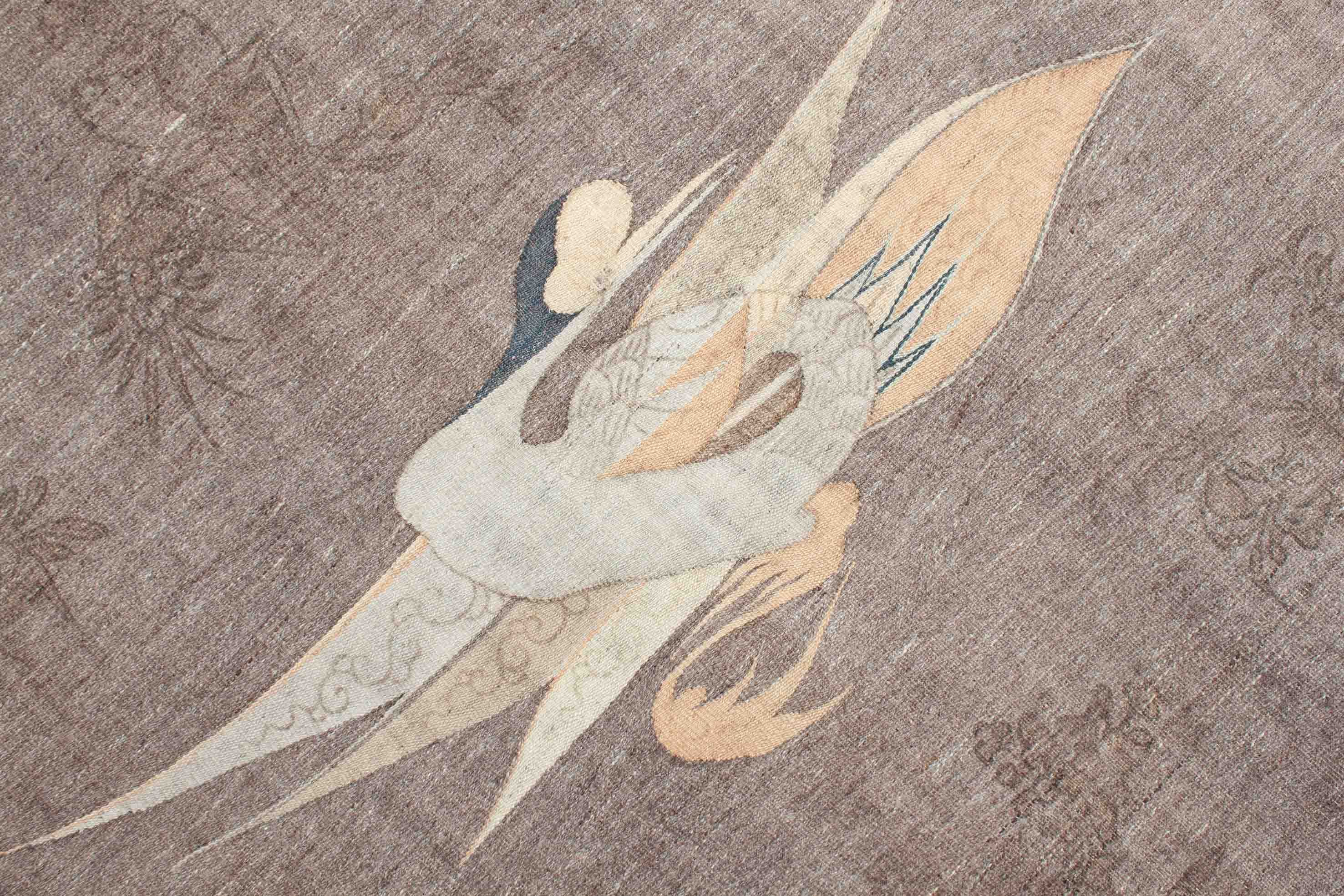
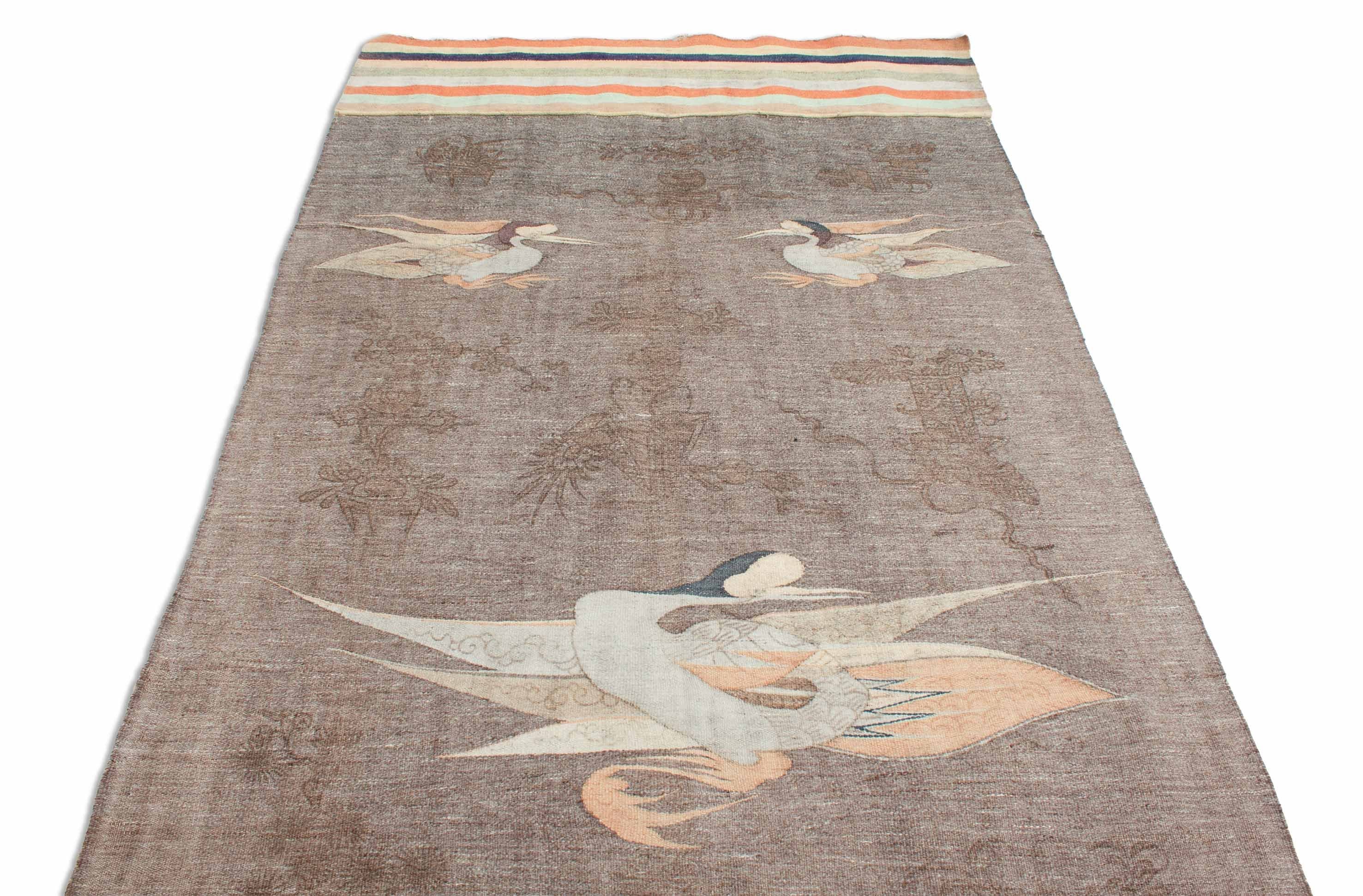
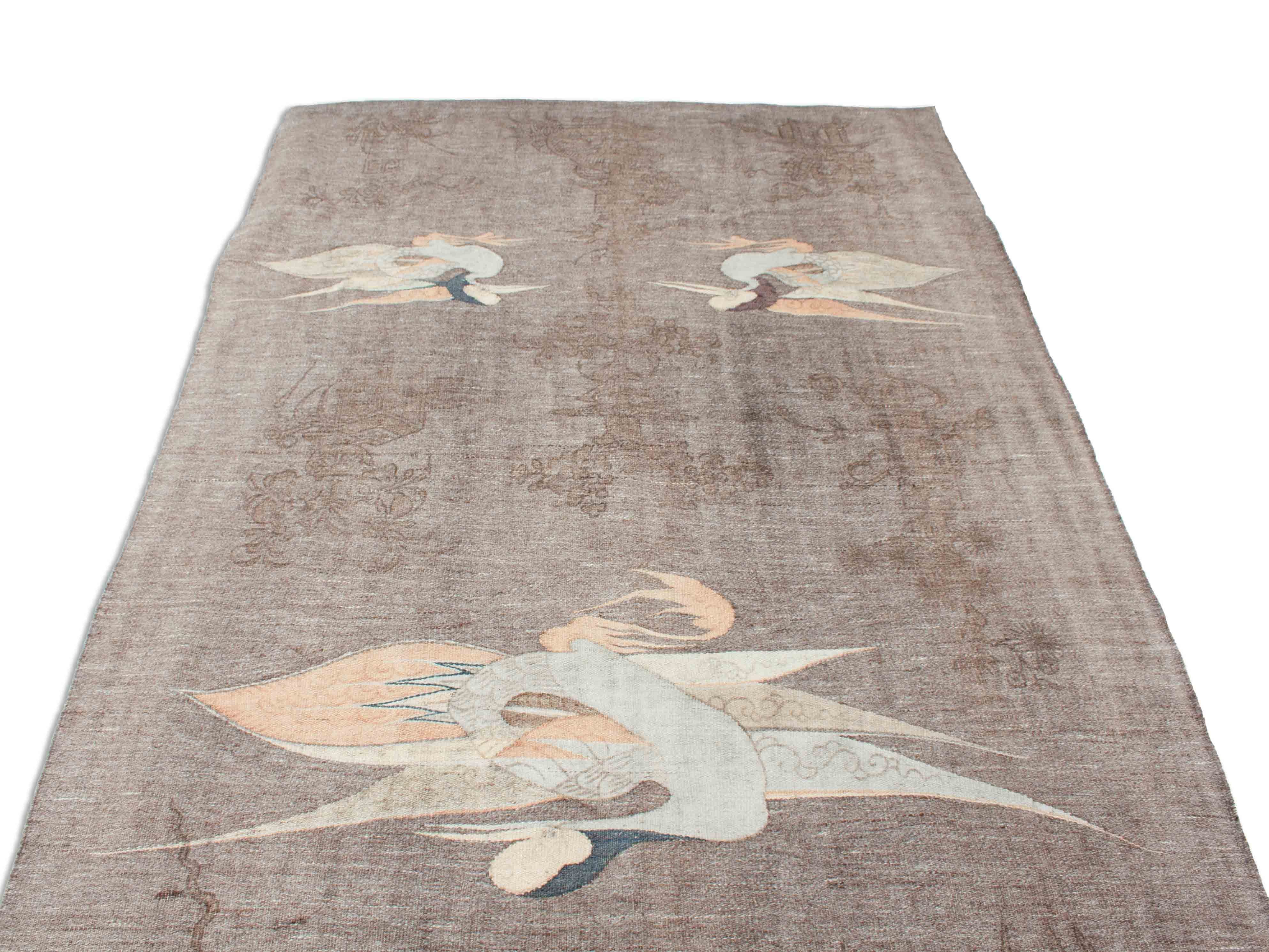
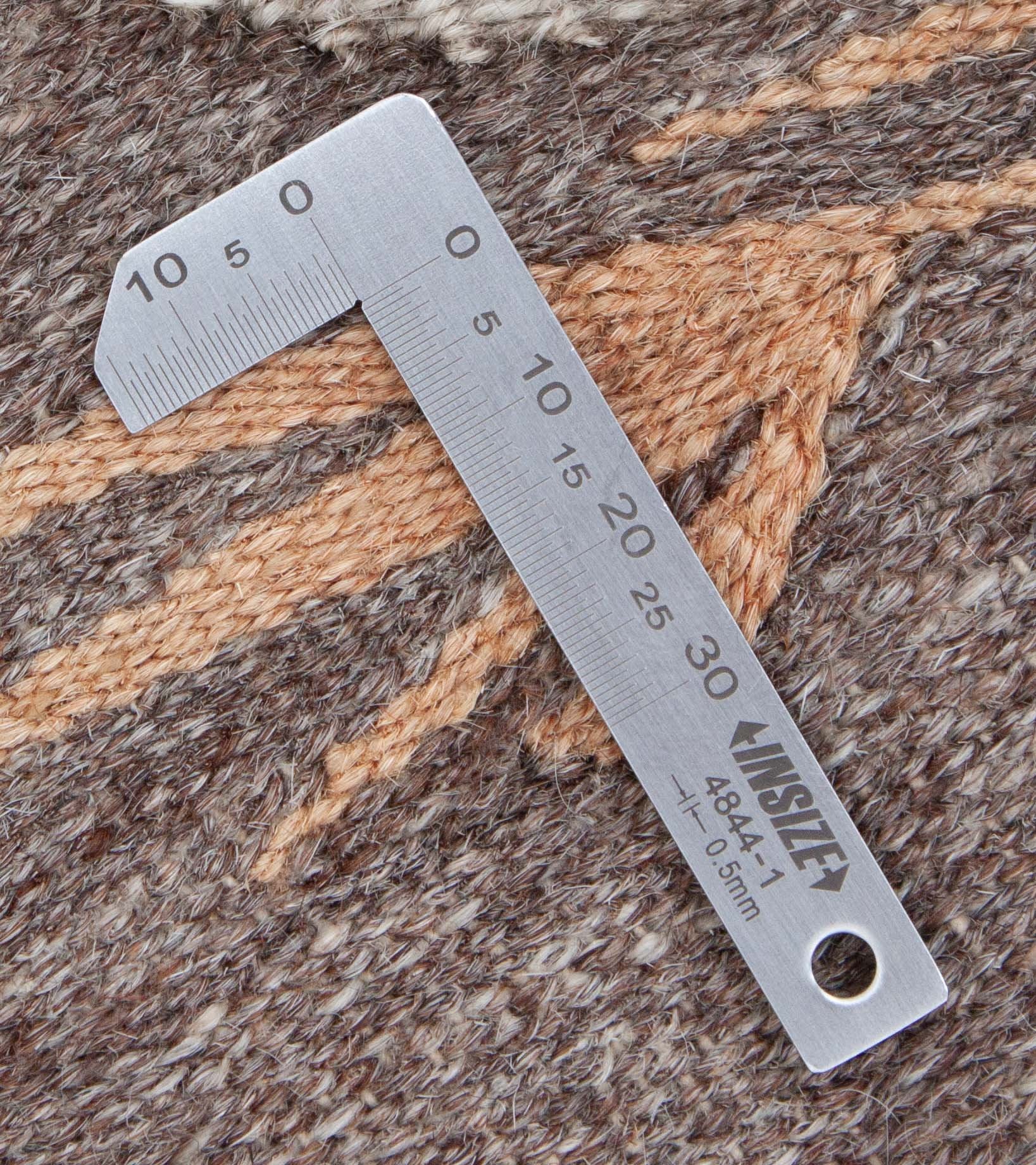
Antiker Japanese Kilim
265 cm x 116 cm
Nr. 16297
Plain Antiker Japanese Kilim runner, gray with motiv and stripes
| Place of origin | Japan |
| Size | 265 cm x 116 cm (= 3.07 qm) |
| Manufacturing | hand woven |
| Material | Weft (tuft): wool (handspun, natural color)Warp: cotton |
| Pile height | 4mm |
| Year of manufacture | 1910 |
| Coloring | gray |
| Edition | Single piece |
Place of origin
Kilims (also gelim) have traditionally been produced for personal use only. Nomads and farmers used and continue to use their kilims as rugs on the floor, but also as tent or wall hangings, blankets, cushions or bags. Because kilims were constant companions in everyday life, the patterns, however naive they may seem, always carry a personal message and meaning for the weavers and their families.
In Europe, kilims from Turkey, the Caucasus region, Iran, Afghanistan and the Turkmen cultural area are particularly well-known and popular. In fact, in all countries where rugs are knotted, rugs are also hand-woven. This kilim was hand-woven in Japan and was previously used exclusively as a tapestry. Japanese kilims are extremely rare and have collector's value.
Kilims are always hand-woven and consist only of warp and weft threads, i.e. they do not have a thick, raised pile. Kilims have the same pattern on both sides and can therefore be used on both sides. The pattern is created by the colored weft threads that are woven into the warp threads. This antique Japanese Kilim is a collector's item. It is about 110 years old and, therefore, a really special piece. Antique rugs like this Japanese Kilim are still very popular and are sold at top prices by renowned auction houses.
Patterns
The straight stripes of this Japanese Kilim organize and structure the pattern.
br /> The pile is a plain gray. The simple design is understated, but can also provide a great design accent. The monochrome appearance of this rug fits perfectly in any environment.
Condition
You are not the first to enjoy this Japanese Kilim. It has had owners before you, who have cherished and used it. It was hand woven about 1910 and has served devotedly ever since. All in all, it is still in good condition and can still bring satisfaction for decades. We have not restored this Japanese Kilim, because we think it is as it is a special charm. If that is what you would like, we will be happy to restore the rug for you, of course.
Material
The technique used to produce the materials of the pile of this Japanese Kilim is over 200 years old. The wool is dyed with natural colors and spun by hand. Dyeing with natural or vegetable dyes is more complicated, expensive and time-consuming than dyeing with chemical dyes. For a bright red, for example, you would need about one kilogram of ground madder root per kilogram of wool as dye. For a strong, not too pale yellow, you would need two kilograms of the dye madder per kilogram of wool. Also spinning wool is time-consuming and labor-intensive. In addition, fewer and fewer people are able to hand spin wool.
But the effort is worth it: By dyeing with natural dyes, the high-quality wool retains its natural fat content. Wool dyed with natural colors and spun by hand creates fascinating, iridescent patterns. The charm of hand-spun wool with its slight irregularities and natural hues unfolds as a contrasting element in modern interiors, but also in rooms that are furnished in a more traditional or country house style.
Hinweis zu den Fotos
Kinderarbeit? Nein Danke.
Choose options










265 cm x 116 cm
Nr. 16297

